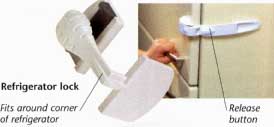Many gadgets are designed to prevent cabinets from being opened and to prevent windows from being opened too wide. There are numerous designs to choose from. Keeping children out of cabinets or drawers prevents fingers from being trapped and denies them access to fragile or dangerous items.
Refrigerator lock: Not only stops a child from raiding the contents, but it also prevents the door from being left open and the food spoiled. Fits around corner of refrigerator; Release button.
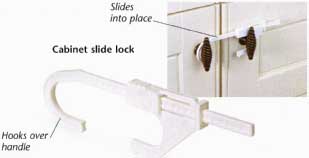
Cabinet slide lock: This lock clamps around cabinet doors and prevents either door from being opened. Slides into place; Hooks over handle.
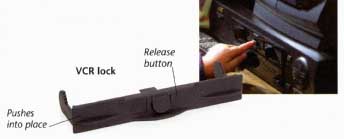
VCR lock: Stops children from pushing items or hands into the video slot. Simple to install.
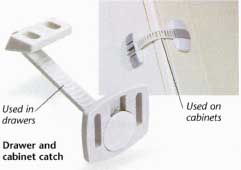
Drawer and cabinet catch: This stops drawers and cabinets from being opened by a child. There are many types available. Used in drawers; Used on cabinets.
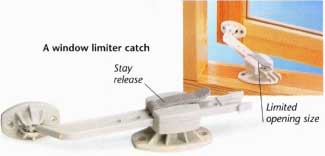
A window limiter catch: This is designed to stop a child from opening a window wide enough to jump out. It needs to be screwed in place, with one part on the frame, and the other on the moving casement. Stay release; Limited opening size.
Emergency-Release Door Latches
These latches are used to prevent a child from being locked inside a room. Privacy door latches with a lever handle may be installed using a technique similar to that shown for installing a lockset. If the handle is a knob design, the technique has to be altered to account for cutting a large access hole in the door to deal with the locking mechanism. Most such mechanisms are opened from the outside using a key inserted into the handle. Some designs simply have a lever that can be turned, or a large slotted screw that can be turned to undo the lock. Many also have a template to follow when installing.
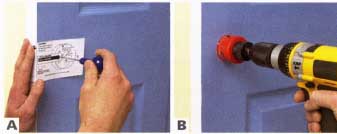
A. Measure exact central point for access hole, on both sides of the door. If supplied, use a template.
B. Attach a hole cutter to a cordless drill; the correct size will be specified by the latch manufacturer. Drill into one door face.
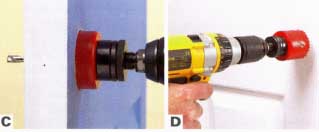
C. Stop drilling when the bit exits the opposite door face.
D. Change to the opposite side of the door, drilling until the cutter reaches the cut on the other side.
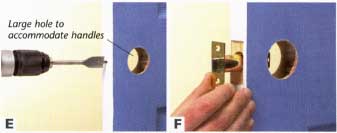
E. Drill or cut out the edge of the door to accommodate the latch mechanism. Large hole to accommodate handles
F. Chisel a recess for the latch plate, then fit the latch into the hole.
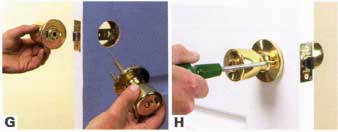
G. Position the handles, threading the spindle through the latch mechanism as shown.
H. Tighten the screws, then close the door to check that the mechanism works.